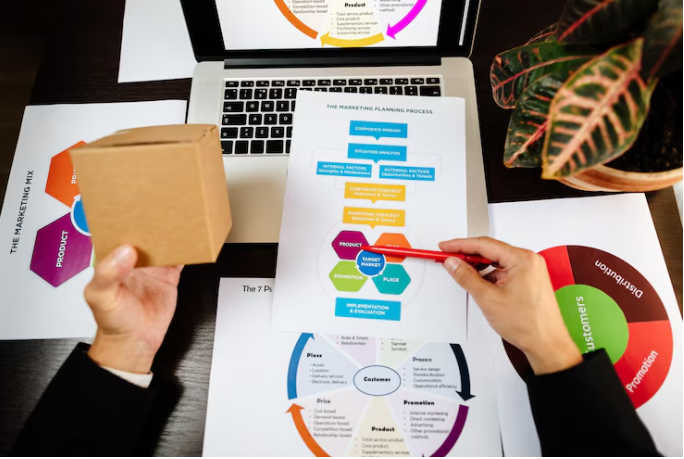The role of customer feedback cannot be under-appreciated, it has helped businesses anticipate and adapt to changing customer needs and product managers need to prioritize them. Customer feedback provides your business with valuable insights into what your customers need from a particular product, how well that product is performing, and of course how you can improve the product.
To ensure that your product resonates with customer needs and desires, there should be a step-by-step collection and analysis of customer feedback. Customer feedback will always be an important tool and leveraging it will help create better products.
But, Does Customer Feedback Matter At All ?
Yes, customer feedback matters! They are important in product development because they consist of opinions, dissatisfactions, praises, and suggestions about a particular product or service. Understanding how customers perceive and interact with your product is vital for product development and product managers need to leverage them to create impactful products. Customer feedback is priceless for several reasons and here’s why:
1. Improve Features/Focus on Existing Features: Feedback about products from customers can help enhance and make the products more appealing. Positive feedback can tell you which features are particularly appreciated, and with negative feedback, gives you room for product improvement. Additionally, you can prioritize features that connect more with your customers based on their feedback.
2. Circles Out Customer Problems And Pain Points: Customer feedback highlights the issues your customers experience when using your product. These problems encountered help product developers identify and address underlying problems through various internal testing.
3. Improve User Experience: User experience is important for the success of any digital product. When customers leave feedback, it helps business owners and product developers understand how users interact with their products and where improvements are needed. It could be in making the user journey a lot easier or improving visual appeal. Addressing user concerns will lead to a more enjoyable user experience and positive ratings/reviews.
4. Helps Build Customer Trust And Loyalty: Asking your customers to always leave feedback not only fosters your brand image but helps build trust and credibility because your customers will feel that they are heard and appreciated.
5. Staying Ahead: The marketplace is crowded, and products that best meet customers' needs stand out. When customers leave their feedback, it fosters continuous improvement which can help your business stay ahead of competitors and maintain a strong and high-value position.
Why Are Customers Reluctant To Leave Feedback Most Times?
Customers can become reluctant to leave feedback for some reasons and understanding why is crucial for e-commerce businesses that are aiming to improve their products and services. Why are they reluctant? Here are a few reasons why customers may feel reluctant to do so:
1. Time-Consuming Process: Many customers feel like leaving feedback takes so much time, from filling out the review forms to writing detailed comments and selecting several rating aspects of the product or service can be quite tiring.
2. Security and Privacy Reasons: Some customers might just be hesitant to discuss their details or experiences on the Internet because of privacy and security reasons. They may have concerns over their data being misused or targeted at undesirable marketing.
3. No Incentive: Perhaps, your product has not served your customer well enough for him or her to leave a review, they probably wouldn’t want to take out time from their busy schedule to leave a review. You can offer customer discounts, loyalty points, or entry into a giveaway in return for feedback.
4. Oversight: Sometimes, customers might actually forget to leave a review. They purchase the item and move on to other things. They may not revisit the website to leave feedback.
5. A Bad Experience: A customer may avoid posting their review if they had a bad experience to avoid conflict or potential harassment. If, however, they were merely satisfied with their experience and nothing short of amazing but typical of decent customer service, they might be less likely to share a review.
7. Advanced Review Processes: It is important to streamline the process of leaving feedback because it makes it easier for customers to leave a review. If the process requires multiple steps then customers are less likely to do so.
8. No After Reminders: Customers may forget to write a review if there are no follow-up reminders. Softly timed nudges can prompt them to leave feedback.
It is necessary to have a process for gathering and analyzing customer feedback if it is to be effectively utilized. Here are 5 strategies on how to do so:
5 Easy Strategies For Collecting Customer Feedback
1. Use Multiple Feedback Channels:
You can collect feedback using various channels such as:
a) Surveys: You can send out surveys to your customers by emailing online questionnaires or putting links on user interfaces.
b) Social Media: When customers leave their feedback using social media channels, you can easily monitor their comments and discussions about your products.
c) Reviews: Kindly urge customers to leave their opinions concerning your products on your website or third-party platforms.
d) Customer Support: Get to know your customers better by simply interacting with them with the help of customer support representatives. Gather insights from customer support interactions.
2. Always Ask The Right Questions: Ensure to formulate inquiries that can yield insightful feedback from your customers. For example, ask “What specific features do you find the most useful?” instead of asking “Do you like our product?”
3. Offer Incentives: Everyone loves a good incentive. Offering incentives like discounts, free shipping, free trials, flash sales, and coupons will encourage customers to leave feedback. Try it, it works!
4. Assure Anonymity: For privacy reasons, some customers will prefer to be unidentified. So, to encourage honest feedback from these types of customers, consider providing them with an anonymous submission option.
5. Always Ask For Feedback: Asking for feedback from your customers shouldn’t always be a one-time thing, make it a continuous process. Always ask for feedback at various points in the customer journey to stay updated about their experiences and changing demands.
Got Conflicting Customer Feedback? How To Deal With Them!
When it comes to handling conflicting customer feedback, it can be a hassle. It requires a thoughtful and balanced approach. First, you can start by pointing out common patterns among the feedback to find out underlying issues that may not be readily noticeable. Feedback should be prioritized based on its impact on the overall customer base and you should implement changes that will benefit the majority or address critical issues. Additionally, consider sectioning your audience to tailor solutions to specific groups, as different sections may require different needs.
Remember, communication is key. Communicate with your customers on how you plan to address their conflicting feedback/opinions to build trust. Also, implement A/B testing to help experiment with different solutions and see what works best. By doing this, you can make well-rounded improvements that can enhance your product’s appeal to a broader audience as well.
After Collecting Customer Feedback, How Do You Analyze Them?
Well, once you have collected customer feedback, here are a few tips on how to analyze them effectively for product development:
Categorize Feedback: Start by organizing customer feedback into different categories. For instance, performance, functionality, usability, etc. This helps to identify the patterns and issues they have in common.
Pinpoint Patterns/Trends: Look out for trends in customer feedback. Are a lot of customers complaining about the same problem or requesting the same feature? These patterns can help product developers prioritize their projects.
Detailed Feedback Analysis: Customer feedback can be analyzed qualitatively and quantitatively. You can analyze customer feedback quantitatively by using statistical tools. For example, it can track the average product ratings or show what issues customers mention mostly. If you're analyzing customer feedback based on quality, you can use something like sentiment analysis to determine customer sentiment.
Prioritize Feedback: Not all feedback requires immediate action. You can prioritize actions based on factors like the number of customers affected, the effect on user experience, and how feasible it will be to make changes.
Some Best Practices To Leverage Customer Feedback
We understand that customer feedback has a major impact on product development. The main goal of collecting and analyzing customer feedback is to make meaningful improvements to your products. To optimize the benefits of customer feedback, here are a few best practices to do so:
1. If you want to build trust with your customers, then you need to be transparent. Let them know that you care about their feedback and share the reasons behind your decisions openly and how it has influenced product changes.
2. Ensure you respond to customer feedback promptly, especially when addressing critical issues. Responding to your customers on time shows that you value their feedback and you are dedicated to improving their experience.
3. Highlight areas of improvement to your team by sharing customer feedback with them and celebrate successes. This can motivate employees to work harder with the goal of delivering a better product.
4. Ensure to follow up with customers after they have left their feedback to let them know what actions were taken to fix their issues. This can enhance customer satisfaction and encourage ongoing engagement.
5. Use other data sources like usage analytics to get a comprehensive view of how your product is performing and the areas that require improvement.
Final Curtain!
Customer feedback is a vital component of successful product development. By systematically collecting, analyzing, and acting on feedback, businesses can create products that truly resonate with their customers, enhancing satisfaction and driving growth. Handling conflicting feedback often requires identifying common patterns, prioritizing based on impact, segmenting the audience for tailored solutions, and communicating transparently about planned actions. Implementing A/B testing or pilot programs can help find the best solutions.
Using tools like Kudobuzz can help streamline the feedback collection process, providing valuable insights for continuous improvement. Incorporating customer feedback into your strategy is an ongoing commitment that ensures your product evolves in line with customer needs, leading to greater market success. You can easily Sign up with Kudobuzz today and get started!








